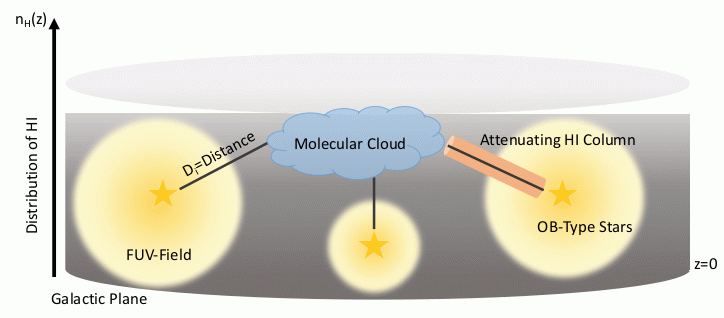What is the structure and chemical composition of gas that may feed future star formation? Before interstellar gas turns dense enough to form new stars it is not fully molecular yet but in some so far unknown transitional state. A special case of such gas clouds are given by high-latitude clouds representing material that may fall onto the plane of the Milky Way.
In a recently accepted paper by Nicola Schneider and collaborators we reported results from SOFIA/upGREAT observations of a number of diffuse and high latitude clouds in the Milky Way, in particular the Draco, Spider, Polaris and Musca clouds. In only one of them, the Draco cloud, we detected emission of ionized carbon in spite of it being neither the densest cloud nor the one irradiated the strongest by known sources.
When trying to model the emission of all observations in terms of an astrochemical model of a photon-dominated region it turns out, that the model is not able to simultaneously explain the strength of the continuum emission from dust and the ionized carbon line. The ionized carbon detection and also the non-detections suggest a very low impinging UV field well below what is actually observed taking all the known stars in the environment. For the Draco cloud we can explain the difference by the additional energy from a shock that is produced when the cloud is hitting the interstellar gas of the Milky Way and some shielding of the cloud by interstellar dust in atomic gas. However, for the other clouds, we do not have a consistent explanation yet.
The paper combined the results from a fruitful collaboration between the CRC 1601 subprojects B2 and A6.
Figure caption: Schematic illustration of the illumination of a high-latitude cloud by UV radiation from stars in the plane of the Milky Way. The orange cylinder along the path between star and cloud indicates the dust column which attenuates the UV-field.

